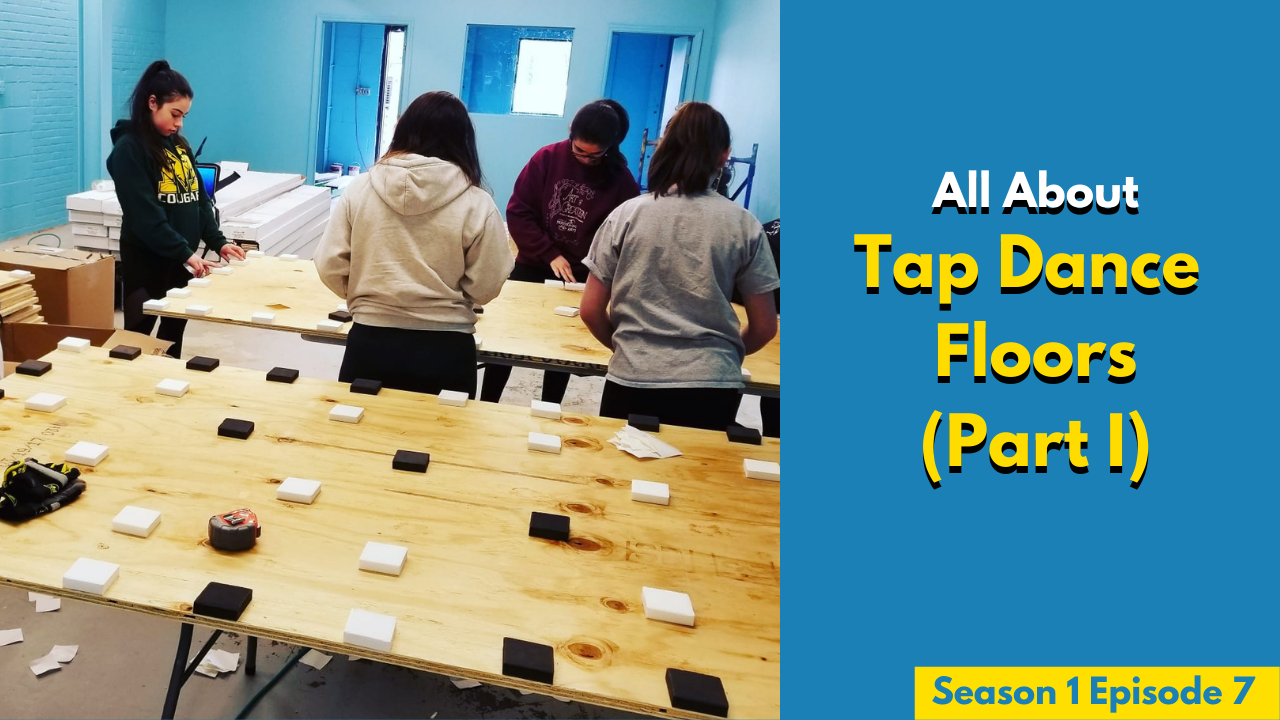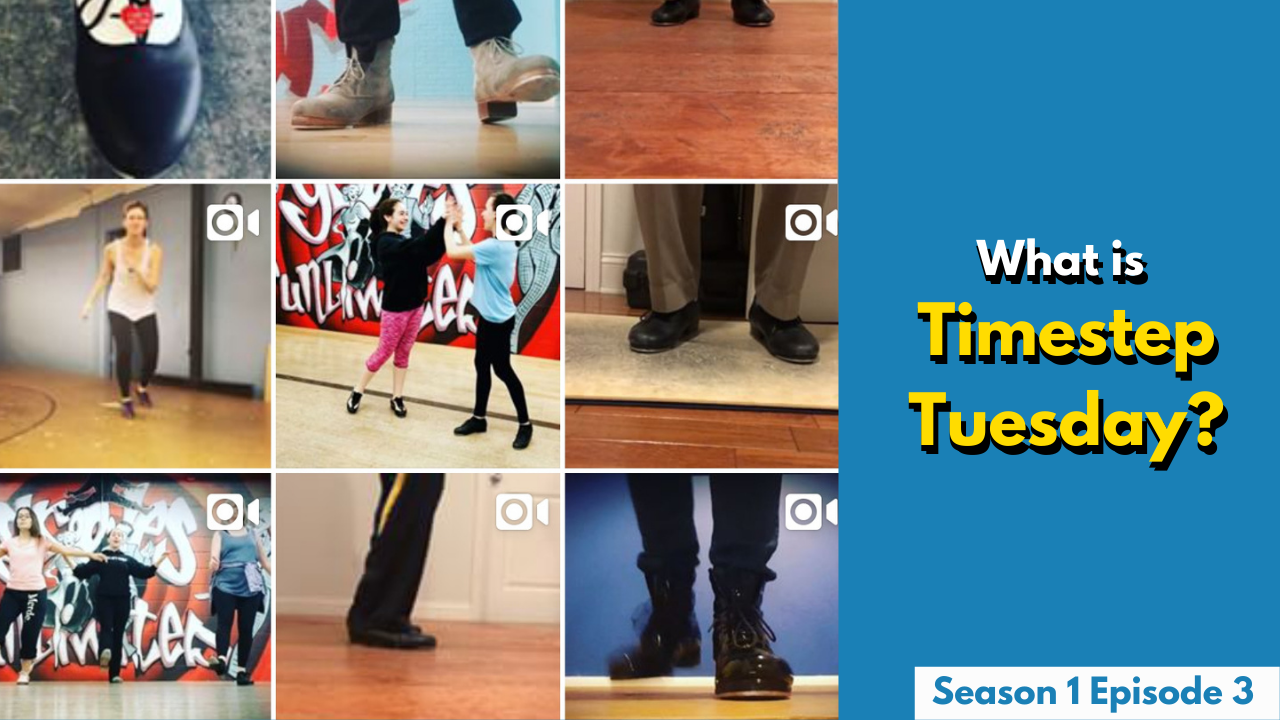Tap Dance Floors (Part 1)

Published on September 27th 2018 by Hillary-Marie
Today’s topic of discussion is tap dance floors!
But first, a FREE offer for you! Head over to iTapOnline™ and click the NEW 10+ Free Tap Dance Resources! You’ll have access to a TON of free content such as my Spotify playlists for tap dancer, my Rhythm Training for Tap Dancers video series, access to the iTapOnline™ Community Facebook group, instructional videos and more!
I’m breaking this episode into two separate segments based on in-studio and portable options. Over the years, I’ve done some heavy research in hopes of finding the best flooring options for my dance studio, home studio and solo tours and this podcast is a detailed description of the portable and permanent tap floors I own and have built. I share this information with you in hopes of it helping you to find the best flooring option for you and your journey in the dance.
**Disclaimer: Before building any floor, please consult an engineer or contractor with the appropriate expertise! This isn’t a how-to guide to DIY tap floors, but rather a stepping stone to your initial research in finding the best product for you and your dance situation.
To see videos of each of these floors in action, head over to ITapOnline™ Podcasts and click on Episode 007 to view the show notes.
IN-STUDIO FLOORING
For Commercial or Home-Studio Dance Setting
Tongue and Groove Pre-Finished Hard Maple with Stagestep Squares (2:29)
This floor is laid on top of cement, bottom to top layers include: vapor barrier, 2’’x 2’’ x ¾‘’foam squares, plywood layer, second plywood layer, felt paper, tongue and groove maple.
Positives: (3:15)
– This is the ultimate floor! (in my opinion).
– The bounce to it feels good on the body. (shock absorption!)
– The sound is beautiful.
– The grain of the wood feels nice.
– This flooring system can be laid over any type of floor, including cement.
– A great investment. This floor will last many years with multiple sandings.
Challenges: (3:40)
– Extremely expensive. To cut costs, I personally carried in over 5,000 lbs of pre-finished wood. While the pre-finished product is more expensive, you save on labor costs because the installer doesn’t have to sand and refinish the surface, and the pre-finished wood lasts longer. My students also pitched in and helped me with installing about 1,000 foam squares onto the subfloor instead of having the hired installer’s team do it. With all of these cost-saving techniques, it was still extremely expensive.
– Permanence. This isn’t a floor I can pick up and take with me to a new location.
– Maintenance. I’ll need to sand and refinish this floor every couple years.
DuraDance System by Lumber Liquidators (5:11)
This floor is laid on top of cement, bottom to top layers include: vapor barrier, shock absorbing roll out foam, horizontally pressed click bamboo.
Positives: (5:36)
– More affordable than the tongue and groove option listed above. This is a sprung, wood floor, at maybe 60% of the cost of a hardwood floor.
– Does not need to be re-finished.
– Has a great, healthy bounce.
– Bamboo is extremely durable and can really take a beating. This floor barely even dented after four years of regular use by percussive dancers.
– This flooring system can be laid over any type of floor, including cement.
Challenges: (6:20)
– Very temperamental. The floor would contract and expand according to temperature and humidity level of the seasons. While this is a character of wood in general, this was on a larger scale. The thermostat had to be on around the clock specifically for the floor to prevent major gapping.
– Lumber Liquidators is a challenge to work with. The reason you cut costs by working with them is that you essentially take on the role of Contractor so you have to be prepared to do heavy research and take lead in overseeing the delivery and installation of materials (which for me included tipping the FedX driver to help me carry 30+ boxes of wood up a flight of stairs).
– Extremely slippery upon installation. The first few months of this floor was like being on an ice rink, but the speed of it became more comfortable after we wore it in.
– After 4 years, it started to splinter in a few places. Not a big deal to a tap dancer, but not ideal if you’re sharing the floor with other styles of dance who work barefoot or do floor work.
– Online Horror Stories: Other people who chose to purchase this product had serious problems with this floor that I personally did not experience. Most notable were buckling and vapor issues.
Something important to consider: This product was advertised to me as a non-permanent option that I could install, and pick up to take with me to a new location in the future. Unfortunately, this wasn’t the case because upon installation, they glued the floor and if they had pulled it up, the click mechanism that holds to individual panels together would have broken. However, according to another installer, it was better in the long run that the floor had been glued because it prevented the buckling that other purchasers had experienced.
At Home Studio:
O’Mara Floor (10:00)
I have a 6’ x 6’ O’Mara floor made of Michigan Hard Maple on shock absorbing foam squares, held together by a cable system. This floor is laid on top of an oak wood floor.
Positives: (11:00)
– The bounce feels good on the body.
– It provides ample sound, so you don’t have to dance heavily.
– The speed of the floor is nice.
– This flooring system can be laid over any type of floor, including cement.
– Non-permanent installation, the floor can be picked up and re-laid in a new location.
– The cable system is easy to install.
– A great investment. This floor will last many years.
Challenges: (11:42)
– Expensive. This was a pricey purchase, but very worth the high quality of the product.
– The floor is very heavy. While it’s technically portable in the sense that it can be moved from location to location, it’s not easy to move. (O’Mara does have a smaller portable tap floor, if that’s what you’re looking for).
The Final Verdict (12:26)
If you’re looking for a permanent build-out, I highly recommend the first option I discussed, the Tongue and Groove Prefinished Hard Maple with Stagestep Squares. If you’re looking for a non-permanent build out, I highly recommend the O’Mara floor.
Share your thoughts: (12:53)
I would love to hear from about your current flooring situation. What are you dancing on now at home or at your studio? Do you have any floor experiences you want to share, suggestions or questions? Please comment and share your thoughts and be sure to join me for Part 2 (coming soon) where I discuss my Portable Tap Floor suggestions.
Subscribe
Click here to subscribe to the podcast and visit www.iTapOnline.com for more content, including blog posts, tap dance tutorials, my free rhythm training for tap dancers video series and much more. After subscribing, you’ll receive an invitation to join our facebook community.

